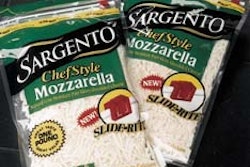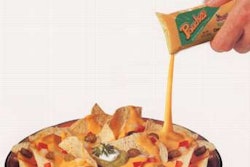
Yet Hanser Gardner Publications (Cincinnati, OH) has published “Plastics Packaging Properties, Processing, Applications, and Regulations,” a work that reports precisely on the topics it suggests. It’s written by Michigan State University professors Ruben J. Hernandez and Dr. Susan E.M. Selke, and John D. Cutler, president of Advanced Materials Engineering Inc., Naples, FL. Selke recently penned a related paperback titled, “Understanding Plastics Packaging Technology” (see Packaging World, Sept. ’98, p. 80, or packworld.com/go/selke).
“Plastics Packaging” is no page-turner, but that’s not its purpose. It functions as a study guide, which includes study questions to help provoke a deeper understanding of the specific chapters. The book lists properties of various plastics and guides readers on the selection of appropriate polymers and processing methods used in forming plastics as they relate to packaging applications.
The book’s preface states that one goal is to provide students in the School of Packaging [presumably MSU’s] with reading material on plastics. “We hope that it can also be useful to packaging professionals responsible for writing specifications, designing, fabricating, testing and controlling the quality of plastic materials. We also hope to trigger the reader’s curiosity to pursue further studies in the exciting world of packaging materials.”
From a graphics perspective, it’s hard to imagine this book triggering much excitement. To its credit, the book provides 120 drawings and 30 tables (such as the one shown below), but it cries out for photos of commercial packages that could clearly illustrate, for example, an in-mold labeled product. And photography showing a machine actually forming a flexible or rigid plastic material into a package would not only enliven the book, but also paint a stronger image in readers’ minds than the traditional engineering diagram.
Another beef concerns timeliness. The process of conducting research, writing, editing, printing and publishing such a book makes it difficult to report on the new developments that make packaging exciting. For example, in its three-paragraph description of retort pouches, the book correctly points out their limited use in the consumer market. However, PW and other trade publications have reported on U.S. introductions of retail and foodservice products in retort pouches in the past year, and some reference could have been made.
Most of our criticisms, though, pale in comparison to the book’s advantages. If information is power, this is a dynamo. This editor, for one, would like to download all of its knowledge into his personal hard drive. That knowledge comes with a caveat that appears in the preface, where the authors say they “expect the reader to have some knowledge of chemistry and physics.” That background will benefit readers, though it’s not mandatory. The book follows an orderly path that leads from the historical role of plastics in packaging to package lifecycle assessment as it relates to evaluating the potential environmental effects of packaging alternatives.
The book’s 16 chapters include: Polymer Structure and Properties; Major Plastics in Packaging; Extrusion, Film and Sheet; Flexible Packaging; Thermoforming; Injection Molding; Blow Molding and Bottles; Distribution Packaging; U.S. Regulations; and Environmental Considerations. Chapters conclude with helpful references and study questions, much like a course textbook.
An “additional reading list” near the end of the guide steers readers toward opportunities to gain further knowledge. The list is categorized by subject, such as “additives” or “testing.” Published in 2000, the book sells for $69. And while a book like this can’t match the allure of surfing the Web, a packaging pro or student would be hard-pressed to find this much pertinent information in one convenient, portable “package.” And that’s a beautiful thing! (JB)























